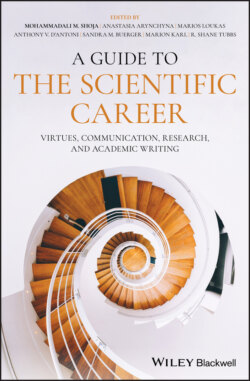Читать книгу A Guide to the Scientific Career - Группа авторов - Страница 93
9.6 Citation Data Sources
ОглавлениеThere is an ongoing debate on the issue of multiple citation data sources (Jacso 2008). Citation data sources, or databases, are web‐based data sources that can be accessed freely or through a subscription cost. These databases provide the meta‐data of scientific publications and their citation information. The debate mainly concerns the fact that the various available data sources are likely to produce different citation data for the same publication. In fact, a comparison has been made to test the robustness of citation outputs from Thomson Reuters Web of Science (WoS) – formerly known as Thomson Corporation's Institute for Scientific Information (ISI) Web of Knowledge – and Google Scholar. The latter uses Publish or Perish, a software program that retrieves citations from Google Scholar and analyses them to present various metrics, a common application in bibliometric literature.10 The WoS results tend to underestimate the citations because WoS covers solely journals included in the ISI list. Google Scholar, on the other hand, tends to overestimate the citations because in addition to covering more journals, it also retrieves citations to working papers, books, and more (Falagas et al. 2007; Meho and Yang 2007; Jacso 2008; Franceschet 2010). Although several groups have supported the idea of using Google Scholar to implement citation‐based statistics, many scientific authorities claim that the Google Scholar data are often inaccurate (Adler et al. 2008). Meho and Rogers (2008) further examined the differences between Scopus and WoS, and reported that no significant differences exist between the two databases if only journal citations are compared. Nevertheless, we have to stress that the specific database used for collecting bibliometric citation data can, in fact, influence scientometric analysis. Many authors have cautioned against the use of citation data without further evaluating the database for validity and verification (Dodson 2009).
